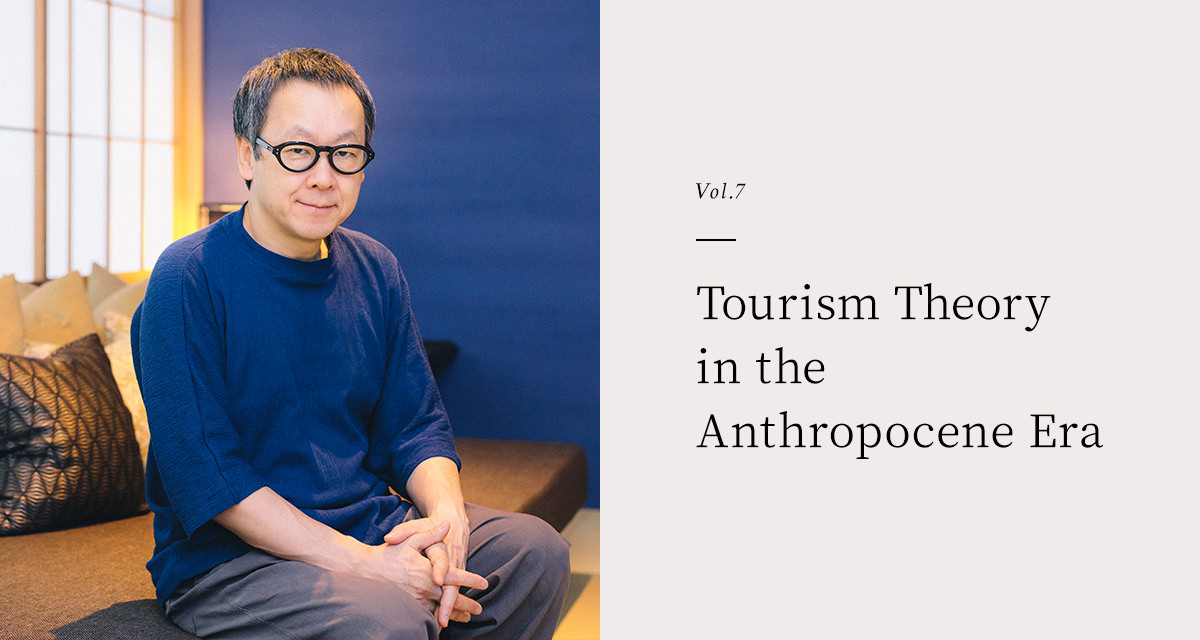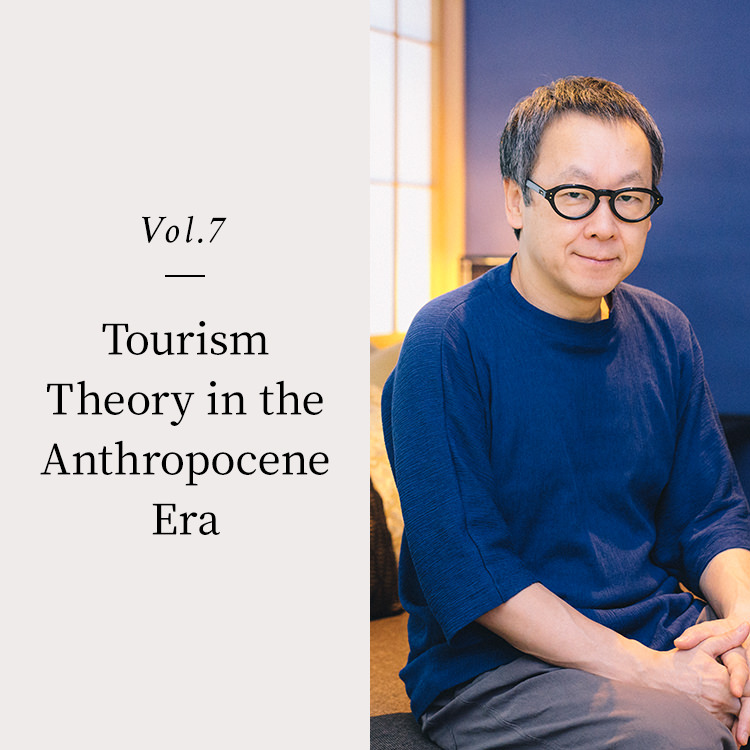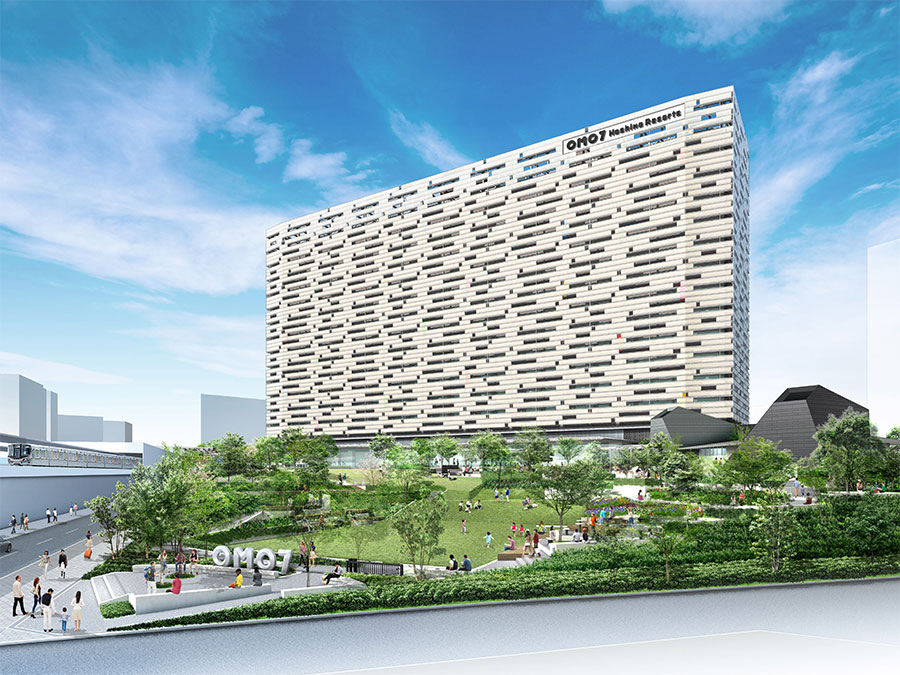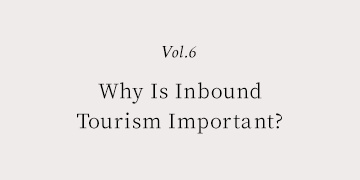

The COVID pandemic, while continuing in its twist and turns, is winding towards its end, and domestic tourism by Japanese travelers is expected to make a recovery in 2022. In 2019, domestic travel consumption was estimated to come to 22 trillion yen and overseas travel consumption was estimated to amount to roughly 3 trillion yen. The travel market is a large one, with 25 trillion yen in latent potential.
Microtourism (tourism to destinations within three hours of one's home) continued amidst the pandemic. One risk is that the travel market relies excessively on travel from major metropolitan areas, which are prone to major COVID outbreaks. While maintaining a certain level of demand in the microtourism market, we have used our wide geographical spread to optimize our organization for regional differences in demand, thereby avoiding risk. Multitasking has contributed significantly in this area as well. KAI Hakone staff can go to KAI Beppu and begin working once they have an understanding of the differences between the facilities, without the need for training.
Through the COVID pandemic, Hoshino Resorts has continuously evolved its approach to the microtourism market. The country has been divided into 11 microtourism business zones, and within each zone ideas have been developed for discovering and sharing the area's allure with locals. New methods have been used to provide this information to potential travelers. For example, we have collaborated with local media, which found itself with less information to present as the result of COVID, posting information about microtourism attractions and prices. We have also used QR codes on reservation landing sites prepared for each business zone for more efficient user guidance. Furthermore, we have created a system that uses postal codes to confirm if market business comes from the correct business zones.
We plan to maintain the same measures for attracting customers from the microtourism market after the pandemic as well. We have discovered that this approach would be effective not only as preparation for future crises, but also for off-season business and weekday business. Our activities have impressed on me yet again the importance of agilely adapting our reservation systems to changing environments. To achieve this, we need a flexible organization in which our internal system development team, operation team, and marketing team work as one to solve problems and rapidly procure resources. Unity. Speed. Flexibility. Flat organization cultures enable these to be achieved naturally within organizations. The source of Hoshino Resorts' competitiveness lies in the fact that it puts Ken Blanchard's theories into practice.
If you were to ask me what has been the biggest change in the hotel industry in the past 30 years, without hesitation, I'd answer "how reservations are made." When I took over my father's hot spring ryokan, there were only two ways to make reservations: phone calls from customers and faxes from major travel agencies. These two methods now account for less than 20% of total reservations. The remaining 80% are online reservations, including reservations made by smartphone. One of Hoshino Resorts' most noticeable features is its operation approach, as exemplified by its brand strategy and multitasking. However, I think another key feature is the unique evolution of its reservation methods. Our reservation system, internally named "Yado Gets," has been developed gradually and steadily. We're now on Yado Gets 3.5, and our highest priority now is on agile evolution to Yado Gets 4.0. This has been a long-held dream of mine, and I'm confident that it will present travelers with an ideal reservation experience. At the same time, unless reservation systems and facility operations are integrated, there will be limits on the functions that the systems will be able to provide, and I believe that this could affect Hoshino Resorts' competitive position in the market. For example, at HOSHINOYA Karuizawa there are 77 rooms, which can be broadly divided into three types, but even within any one of those room types there is variety, such as different views and locations. There is a solid need for online systems in which you can reserve specific rooms. This need, I am sure, is especially high for repeat guests. The kinds of reservations that can be made with airlines are not yet possible for lodging facilities.
The return of inbound tourism, which so much attention is being focused on, is forecast to be slow yet steady. Expo 2025 Osaka Kansai will be a national project, and the key to its success will be the number of visitors. For Japanese tourism, it will be vital that the event is a success and that its success leads to future inbound tourism demand. The years from 2022 to 2024 will provide a running start for the event. If demand can be restored to 100% of its 2019 levels by the end of the three-year period, success will be in sight for the Expo. Japan's tourism policies will likely set this as a goal and work toward it. In 2019, Japan was visited by a record 31.88 million foreign visitors. However, these visitors spent a total of 4.8 trillion yen, which is a relatively small amount compared to the 25 trillion yen spent by Japanese people in the domestic travel market. (Note 1) The recovery of the inbound tourism market also means the recovery of the outbound tourism market (overseas travel by Japanese people). In 2019 terms, when that 4.8 trillion yen in inbound consumption starts coming back, 3.0 trillion yen will begin leaving the country in outbound consumption. That's why I think we should just calmly and steadily focus on this running start toward Expo 2025 Osaka Kansai.
During this running start, Hoshino Resorts' core strategy will be to accelerate its activities related to the OMO urban tourism hotel brand, growing it into a brand on par with HOSHINOYA, KAI, and RISONARE by 2025. In 2021, we opened four OMO locations, and in 2022, we will be opening four more announced locations, including OMO7 Osaka (Note 2). We plan to further speed up these efforts. As past experience has shown, when hotel market conditions are poor, a greater focus tends to be placed on the abilities of operating companies. During the COVID pandemic, the number of Hoshino Resorts-managed facilities has risen. To take advantage of this opportunity and meet the needs of hotel investors, it is vital that we hire more tourism personnel. In April 2022, Hoshino Resorts will be hiring 681 new college graduates, so we will not be grappling with the personnel shortages being faced by the tourism industry in Western countries.

OMO7 Osaka (scheduled to open in April 2022)
Recently, I had the opportunity to have a discussion with Kohei Saito, the author of "Das Kapital im Anthopozän." My own values align in many fundamental ways with those of the book, so I was interested in how enterprise operators, who are growth professionals, should deal with "degrowth," and I asked him for some of his time so we could discuss it. I found it to be a very exciting discussion, and it provided me with insights into the direction that should be taken by the travel industry in the future.
I made two discoveries. The first was that promoting microtourism is degrowth. Until now, we've focused on how to get people to travel even farther. I'm not saying anything negative about long-distance travel, but if it were possible to provide the same level of travel benefits to people at locations within three hours of their homes, it would contribute significantly to greenhouse gas emissions reductions. The COVID pandemic has redirected the market for people who only travelled overseas to Hoshino Resorts within Japan, and our resorts have received heavy praise. If, after the pandemic ends, we can get the people in this market segment to switch half of their travel to domestic travel and provide them with high quality experiences that they evaluate even more highly than overseas travel, that would be tremendous growth for us, and, from Kohei Saito's global perspective, would represent degrowth.
The second was that shifting to continuous stays is degrowth. Imagine a family that travels for a total of 10 nights per year. If the family took two trips per year, each for five nights, it would have less of an environmental impact than if they took ten one-night, two-meal trips per year. Not only would there be less greenhouse gas emissions from the travel itself, but there would also be the potential for environmental impact reductions during stays, such as cleaning the bedclothes less often. Reducing the number of trips would also significantly reduce the cost per night for travelers. From the perspective of the lodging facility, there would be fewer check-ins and check-outs, which would improve efficiency. It would also take fewer reservations to secure sales, which would lower marketing costs. Factors such as these would improve productivity and contribute to even lower costs. In other words, shifting to continuous stays would reduce environmental impact while making it possible to go from 10 nights of stays per year to 14 or more nights of stays per year, all for the same price. This would be growth from the perspective of the tourism industry, but degrowth from Kohei Saito's global perspective. The dialog didn't cause any dramatic changes in the course our company is taking, but it did reinforce our direction and the reasons behind it, and, more than anything, it further motivated me.

HOSHINOYA Karuizawa
- (Note 1)
- According to the Ministry of Land, Infrastructure, Transport and Tourism White Paper on Tourism, 2020 Edition
- (Note 2)
- As of the present, the Investment Corporation has no plans and has made no decisions to acquire the facilities introduced on this page which are not the property of the Investment Corporation.












